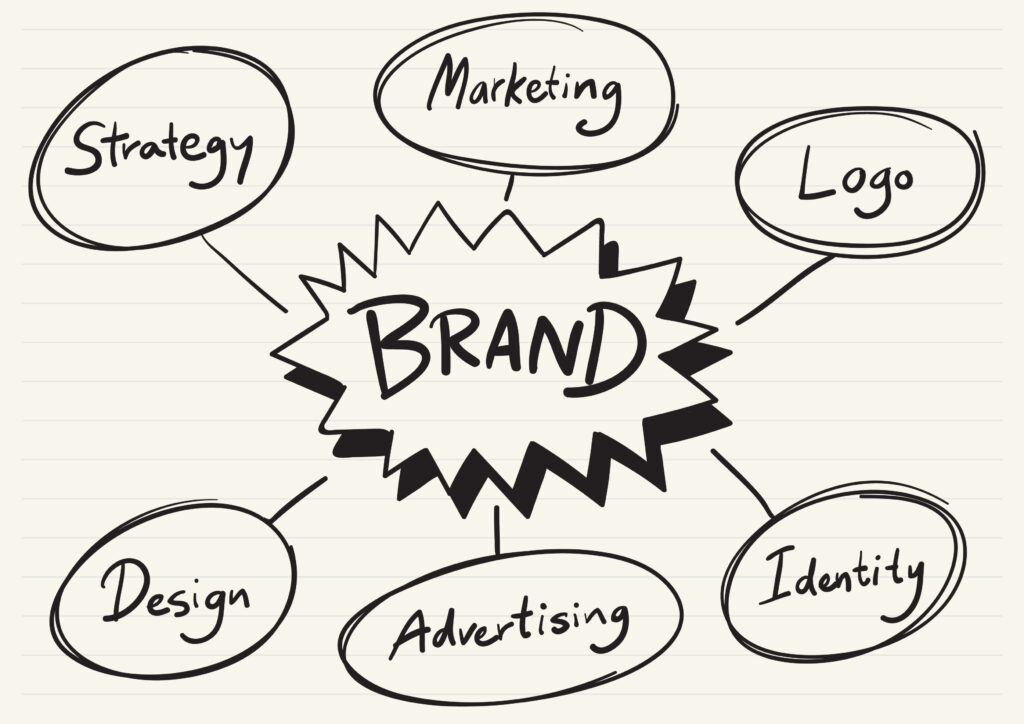In Business, It’s the Little Things That Matter – Top 8 “little things” that make a big difference

Success isn’t always about the biggest marketing budget or the fanciest office space. More often than not, it’s the little things that build trust, win clients, and keep customers coming back. We believe that professionalism is not complicated—and in most cases, it doesn’t even require money. Professionalism is about how you show up, not how much you spend. It’s about consistency, reliability, and respect for the people who trust you with their business. Here are some “little things” that make a big difference: 1. Reliability is Everything A reliable business is a respected business. When you make a promise to a customer—whether it’s a delivery date, a callback, or a quote—keep it. If there’s a delay, let them know before they have to ask. Reliability builds trust, and trust builds loyal clients. 2. Don’t Leave Customers on Read One of the easiest ways to frustrate a client is to ignore their messages. Even if you don’t have an immediate answer, acknowledge them. A simple “Got your message, I’ll get back to you by tomorrow” shows that you value their time and concerns. 3. Timely Responses In business, time is currency. Quick, professional responses can be the difference between winning and losing a client. Slow communication sends the message that you don’t prioritize them—fast communication shows you care. 4. Professional Email Addresses A branded email (e.g., name@yourcompany.com) instantly elevates your image. It shows that you’re serious about your business and separates you from spam or casual personal accounts. Infomedia assists with domain hosting from as little as R39 per month. 5. Your Logo is Your Face On WhatsApp, email signatures, and social platforms, your logo is often the first thing people see. Using it consistently creates a professional, trustworthy image and strengthens your brand identity. 6. Use WhatsApp Business It’s free, easy to set up, and adds a layer of professionalism. You can set business hours, automated replies, and showcase your products or services—while keeping your personal and business life separate. 7. Keep Customers Updated Don’t leave clients wondering about the status of their project. Send updates, even if the update is “We’re still on track.” It keeps them confident in your service and reduces unnecessary follow-ups. 8. Be Trustworthy & Fair Honesty isn’t a marketing gimmick—it’s the foundation of long-term business relationships. Deliver what you promise, charge fairly, and treat clients as partners, not transactions. We’ve learned that these small habits, done consistently, have a bigger impact than expensive advertising campaigns. Clients remember how you made them feel, and professionalism—simple, genuine, and consistent—makes them feel valued. Because in business, it’s the little things that matter… and the little things are often free.
6 Ways to Make It Easier for Customers to Do Business with You

Ever lost a sale not because your product wasn’t good, but because the process was just… too complicated? The truth is, people don’t just buy your service—they buy the experience of doing business with you. At Infomedia, we’ve learned that one of the best forms of marketing isn’t shouting louder, it’s making it easier. Here’s how you can do the same: 1. Be Where People Are Don’t make people hunt you down. If your audience lives on WhatsApp, Facebook, Instagram or email—be there. Having multiple, active communication channels increases your reach and removes friction. At Infomedia, whether someone slides into our DMs or sends a formal request via email, we respond quickly and consistently. 2. Clear, Accessible Information Your business shouldn’t feel like a scavenger hunt. Prices, packages, turnaround times, product specs, payment details—make them easy to find. Whether it’s on your website, quote, or invoice, the information must be clear and consistent. Confusion leads to cart abandonment or people giving up mid-process. 3. Streamline the Process From enquiry to payment to delivery—simplify every step. Have ready-to-send documents, pre-designed forms, standard terms and conditions, and clear payment links. The fewer times a client has to ask, “So what’s next?”, the better your business looks. 4. Offer Flexible, Modern Payment Options Make paying the easiest part. EFT, card payments, SnapScan, PayFast—whatever fits your client base. People are more likely to confirm orders when payment is instant and secure. A customer shouldn’t have to ask if you accept cards in 2025. 5. Stay Human Auto-responses are fine, but nothing beats clear, friendly, human communication. Speak your client’s language. Don’t bombard them with jargon. Let them feel heard. The client who feels understood is the one who returns—and refers. 6. Consistency Builds Trust If you say turnaround time is 5 working days—deliver in 5. If there’s a delay, communicate early. Consistency isn’t perfection, it’s reliability. That’s what keeps businesses alive. Final ThoughtEvery business wants more sales. But it’s not always about lowering prices or doing fancy ads. Sometimes, it’s as simple as making it easier for people to say yes to you. At Infomedia, we don’t just build brands and print signs—we build experiences that make doing business smoother, faster, and more enjoyable. Because when it’s easy to work with you, people want to.
2026 Branding Trends That Will Define the Next Era of Business

As brands evolve alongside technology and shifting consumer values, 2026 promises to bring a new wave of branding approaches that prioritize genuine connections, purpose-driven narratives, and immersive experiences. Below are the top trends shaping the future of branding this year. 1. Purpose-First Brand IdentitiesConsumers expect brands to stand for more than profits—they demand clarity about a company’s mission and societal impact. In 2026, successful brands will integrate their social, environmental, or ethical purpose into every touchpoint. This means embedding sustainability into product design, supporting community initiatives in real time, and transparently reporting progress toward goals. Purpose-first branding transforms corporate responsibility from a marketing tactic into the very DNA of a brand. 2. Dynamic Brand SystemsGone are the days of rigid logos and static style guides. Modern brands embrace dynamic systems—flexible visual identities that adapt to context, audience, or platform. A logo might shift color or form based on user location, a campaign theme, or even the time of day. This fluidity keeps a brand feeling fresh and responsive, while still grounded in a consistent core identity. 3. Co‑Creation and Community-Driven InnovationBrands are no longer sole proprietors of their narratives; they’re collaborators with their communities. In 2026, co‑creation will take center stage as brands invite customers, influencers, and even competitors to shape product features, packaging designs, and campaign ideas. Crowdsourced branding initiatives foster ownership, drive engagement, and ensure that offerings resonate deeply with target audiences. 4. Sensory Branding Beyond SightVisual identity remains essential, but leading brands are expanding into multisensory experiences. Sound logos, ambient scents in retail spaces, and tactile packaging materials create stronger emotional associations and memorable encounters. As digital-physical boundaries blur, brands that orchestrate sight, sound, smell, and touch in harmony will stand out in a crowded marketplace. 5. Micro‑Moment StorytellingAttention spans are shorter than ever, and brands must captivate audiences in fleeting “micro‑moments”—those instances when consumers turn to devices for quick answers or inspiration. In 2026 branding, this means crafting ultra‑concise narratives: snappy animated logos, bite‑sized social posts that convey brand ethos, and interactive web features that tell a story in seconds. The art lies in conveying authenticity in minimal time. 6. Data-Infused Emotional BrandingBrands are using AI-driven analytics not just to predict buying behavior but to understand the emotional journey of their customers. By mapping sentiment shifts across touchpoints—website visits, social comments, customer support interactions—brands can tailor messaging that resonates on a human level. This fusion of data and empathy elevates branding from transactional to transformational. 7. Hyper‑Localized Brand ExpressionsWhile global consistency remains important, top brands are embracing localized sub‑brands or “brand flavors” that reflect regional cultures, languages, and trends. These micro‑brands operate under a unified umbrella but speak directly to local sensibilities—whether through dialect‑specific copy, regionally inspired visuals, or partnerships with neighborhood artists. This hyper‑local approach fosters deeper loyalty and relevance. 8. Ethical Transparency as a Brand PillarTransparency is not optional; it’s the foundation of trust. In 2026, brands will proactively share not only their successes but also their challenges—supply chain hiccups, labor issues, or environmental setbacks—and outline concrete plans for improvement. Real‑time dashboards, blockchain‑verified provenance, and open Q&A sessions will demystify processes and solidify brand credibility. 9. Mixed‑Reality Brand ExperiencesAugmented and virtual reality technologies have matured to the point where brands can offer immersive world‑building experiences. From virtual flagship stores to AR‑powered packaging that unlocks behind‑the‑scenes content, mixed reality brings brand stories to life in three dimensions. As devices become more accessible, these experiential touchpoints will move from novelty to necessity. 10. Brand Humanization Through Internal StorytellingPerhaps the most enduring trend of 2026 is the continued humanization of brands via their own people. Brands are turning their employees into brand ambassadors by showcasing authentic workplace stories, celebrating individual contributions, and highlighting diverse voices across leadership teams. This internal storytelling fosters a culture of transparency and invites customers into the brand’s human side.
Why Repetitive Tasks Are Killing Productivity

Time is one of your most valuable resources, and how you use it can make or break your success. Yet, many business owners and teams find themselves bogged down by repetitive, manual tasks that could easily be automated. From sending follow-up emails to updating customer records across multiple platforms, these routine activities not only eat into your working hours, but also lower productivity, increase the chance of human error, and pull your focus away from what truly matters: growth, strategy, and customer relationships. So, how do you escape the cycle? The answer lies in leveraging CRM (Customer Relationship Management) systems and automation. The True Cost of Repetition Repetitive tasks might seem harmless, but they add up quickly. Consider this: This time, compounded over weeks and months, translates into lost revenue, missed opportunities, and burnout. Even worse, repetition increases the likelihood of human error. Manually entered data can be inconsistent or incorrect. Follow-ups can be forgotten. Client onboarding steps can be skipped. These small issues create cracks in your customer experience — and those cracks widen as your business grows. Automation and CRM: More Than Just Tools The solution is not simply working harder — it’s working smarter. CRM systems centralize customer data, streamline interactions, and provide full visibility into your sales and marketing pipelines. When paired with automation, they create powerful workflows that handle the repetitive tasks for you. For example: These systems are designed to ensure no lead goes cold, no task gets missed, and no opportunity slips through the cracks. Benefits Beyond Efficiency Implementing CRM and automation offers more than time savings. It also means: And perhaps most importantly, it gives business owners and their teams the freedom to focus on strategic growth — not daily admin. INFOMedia’s Approach We specialize in helping businesses streamline their operations using CRM and marketing automation. Whether you’re a solo entrepreneur, a growing SME, or a team looking to scale, we provide solutions tailored to your unique workflow and customer journey. We understand the South African business landscape — especially the challenges faced by township and emerging businesses — and we’re passionate about helping them unlock new levels of efficiency and professionalism. Final Thoughts If your business still relies heavily on repetitive manual tasks, you’re not just working harder — you’re working inefficiently. Every task you automate is time gained, energy saved, and progress accelerated. Repetition is for machines. Strategy is for people. Let automation do the heavy lifting so you can focus on building the business you envision. Want to start automating your business processes?Get in touch with us for a free consultation on how CRM and automation can transform your operations.
Boosting Efficiency: Why Your Business Needs E-commerce, Automation and CRM.

Businesses must adapt to evolving customer expectations and increasingly competitive environments. Three critical components have emerged as essential to achieving efficiency, growth, and long-term customer loyalty: E-commerce, Automation, and Customer Relationship Management (CRM) systems. While each serves a distinct function, their combined power lies in how they integrate to create seamless business operations and enhanced customer experiences. E-commerce: Expanding Reach and Accessibility E-commerce has fundamentally changed the way consumers interact with brands. More than just a digital storefront, an e-commerce platform allows businesses to extend their reach beyond geographical boundaries, operate 24/7, and offer customers the convenience of shopping anytime, anywhere. An effective e-commerce strategy not only drives sales but also provides a wealth of customer data—enabling businesses to track buying patterns, monitor inventory in real time, and respond quickly to market trends. For small and growing businesses in particular, e-commerce is a powerful equalizer, allowing them to compete on a broader scale without the overhead costs of physical stores. Automation: Driving Efficiency and Consistency Once an e-commerce operation is in place, automation plays a key role in improving internal workflows. Automation tools can handle repetitive tasks such as order processing, payment confirmations, inventory updates, customer follow-ups, and marketing campaigns. By minimizing manual processes, automation reduces the risk of human error, increases consistency, and frees up valuable time for staff to focus on strategic tasks. This not only boosts productivity but also helps businesses respond faster to customer needs and maintain a higher standard of service. CRM: Managing and Nurturing Customer Relationships A CRM system is designed to help businesses manage their interactions with current and prospective customers. It consolidates customer data into a single platform, including purchase history, communication preferences, support queries, and more. With this information, businesses can personalize their communications, segment their audiences for targeted campaigns, and provide tailored solutions that build trust and loyalty. CRM systems also support sales teams by tracking leads and forecasting opportunities—turning data into actionable insights. Integration: The Key to Scalable Growth While each of these tools—e-commerce, automation, and CRM—offers individual benefits, their real power is unlocked when they are integrated. For example, an online purchase can automatically update the customer’s CRM profile, trigger a personalized thank-you message, and launch a post-purchase follow-up sequence—all without manual input. This level of integration enables businesses to offer a smooth, consistent customer journey from discovery to delivery. It also ensures that no opportunity is missed, and every touchpoint is optimized for engagement and conversion. In an era where customers expect convenience, speed, and personalization, businesses that leverage e-commerce, automation, and CRM together are better equipped to meet these demands. More than just tools, they form the foundation of a modern, scalable, and customer-centric business model. Investing in these systems is not just about keeping up with trends—it’s about creating efficient processes, gaining deeper customer insights, and building stronger, more profitable relationships.















